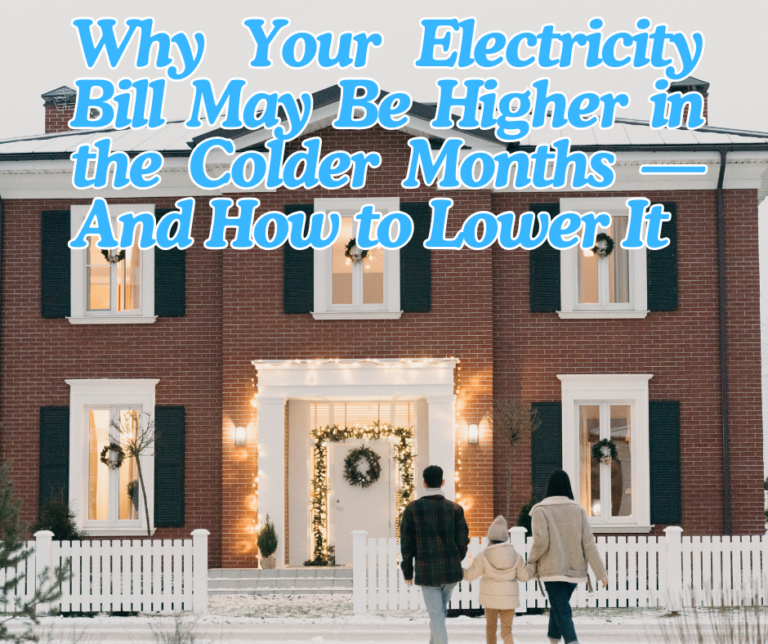
As an energy supplier, we often hear from our customers about higher electricity bills during the colder months. While it might seem counterintuitive at first—especially if you’re not running an air conditioner—there are several reasons why energy costs can rise as the temperatures drop. Let’s explore why this happens and share some practical tips to help you reduce your energy usage and lower your costs.
Why Electricity Usage Increases in Winter
1. Heating Your Home
For most households, heating accounts for the largest portion of energy usage during winter. While many homes use gas or other fuels for heating, electric heaters, heat pumps, or space heaters can significantly increase electricity consumption. Even if you don’t use electric heating, auxiliary systems like blowers and pumps that circulate heat often run on electricity.
2. Shorter Days and Longer Nights
With fewer daylight hours, lights are on longer in the evening and early morning. This extended use of lighting, especially if you’re still using incandescent or halogen bulbs, can contribute to higher electricity bills.
3. Increased Use of Appliances
Colder weather often means more time spent indoors, leading to increased use of electronics, kitchen appliances, and entertainment systems. Families tend to cook more warm meals, watch movies, or run more loads of laundry—all of which consume electricity.
4. Standby Power Usage
During colder months, people often leave electronics plugged in or on standby for convenience. Devices like electric blankets or heated mattress pads also add to the overall consumption.
Tips to Reduce Your Electricity Costs
While winter energy bills may naturally increase, there are many ways to minimize your electricity usage without compromising comfort.
1. Optimize Heating Efficiency
Set your thermostat wisely. Lower it by a few degrees when you’re sleeping or away from home. Consider investing in a programmable or smart thermostat.
Seal drafts and insulate. Use weatherstripping around windows and doors, and add insulation to reduce heat loss.
Use ceiling fans strategically. Run them clockwise at low speed to push warm air back down.
2. Upgrade to Energy-Efficient Lighting
Switch to LED bulbs, which use up to 75% less energy than traditional incandescent bulbs and last much longer.
3. Unplug Unused Devices
Even when not in use, many electronics draw power. Use power strips to easily switch off multiple devices or invest in smart plugs to automate usage.
4. Use Appliances Wisely
Wash clothes in cold water and run full loads in the washer and dryer.
Limit oven usage by making one-pot meals or using energy-efficient devices like air fryers or slow cookers.
Turn off lights and electronics when leaving a room.
5. Consider Home Energy Improvements
If you own your home, consider energy-efficient upgrades like double-pane windows, improved insulation, or an energy-efficient HVAC system. These investments can reduce your long-term energy usage.
6. Leverage Natural Heat
Open curtains on south-facing windows during the day to let in sunlight and naturally warm your home. Close them at night to reduce heat loss.
Final Thoughts
At Spark Energy, we’re committed to helping you manage your energy usage year-round. Many of our plans include tools to track your energy consumption, budget billing options to help you avoid seasonal spikes, and energy-efficiency tips to keep your costs low.
If you’re looking for more ways to reduce your winter energy bills, our customer service team is here to help. Together, we can make this winter more comfortable and affordable for your household.



